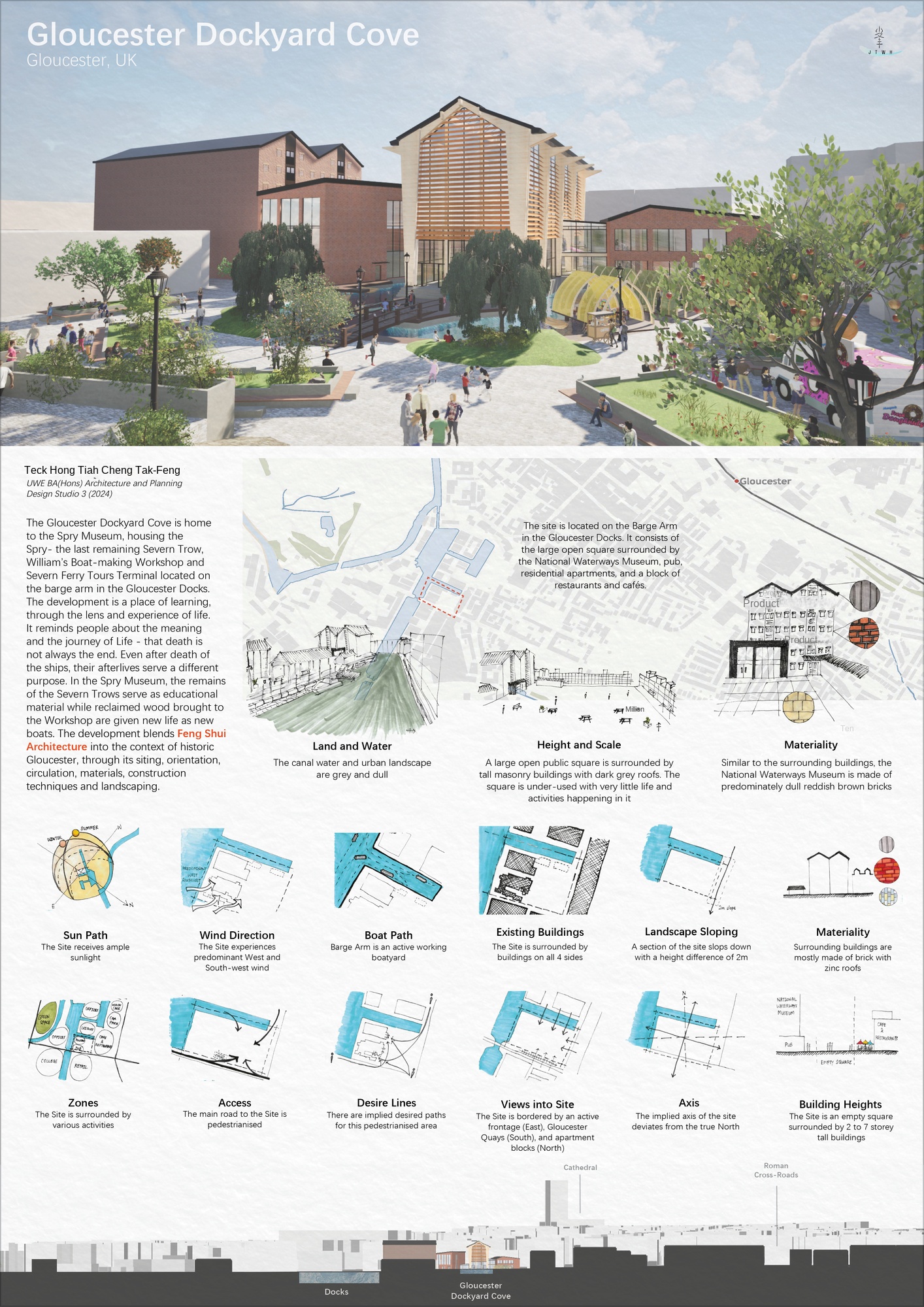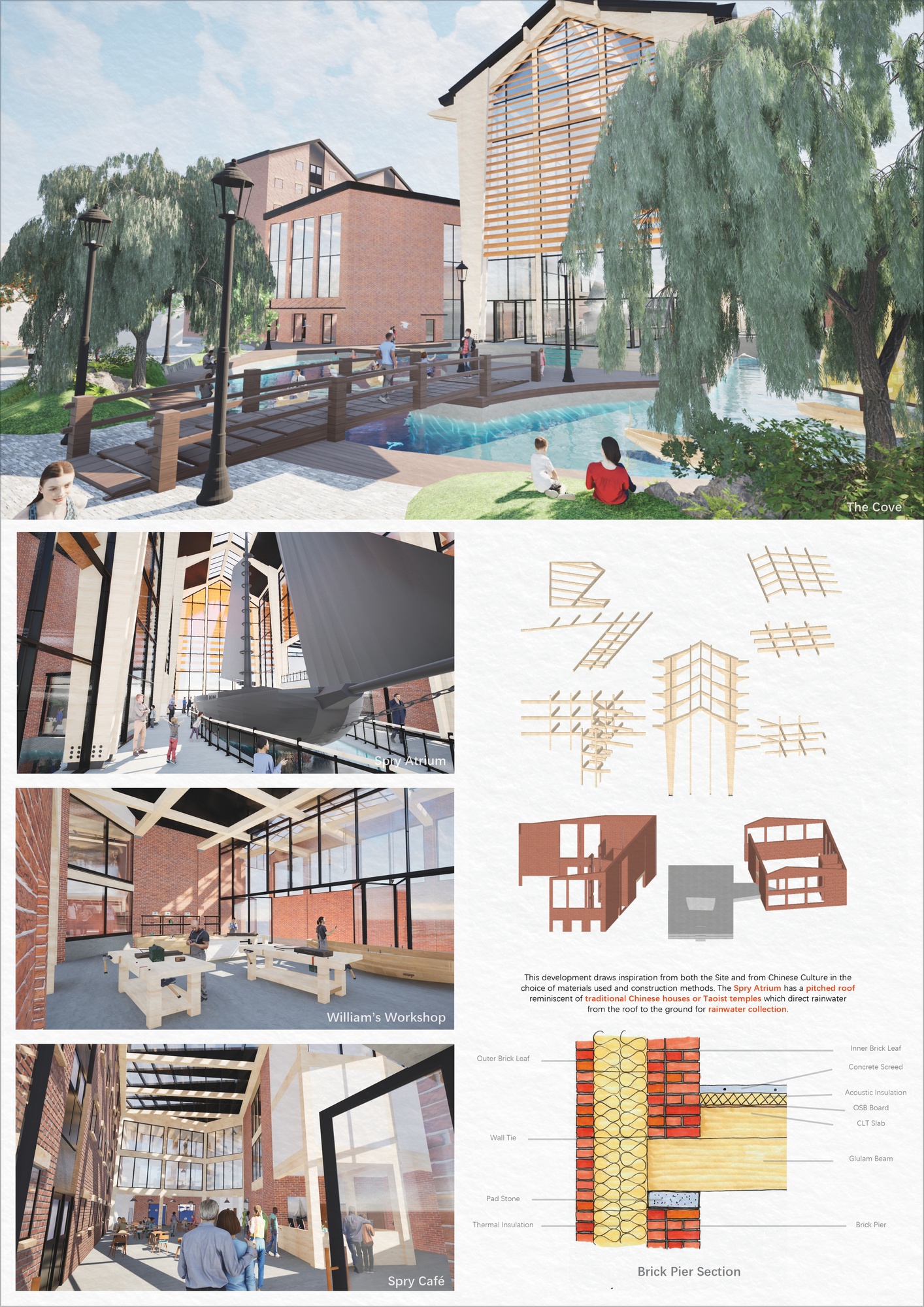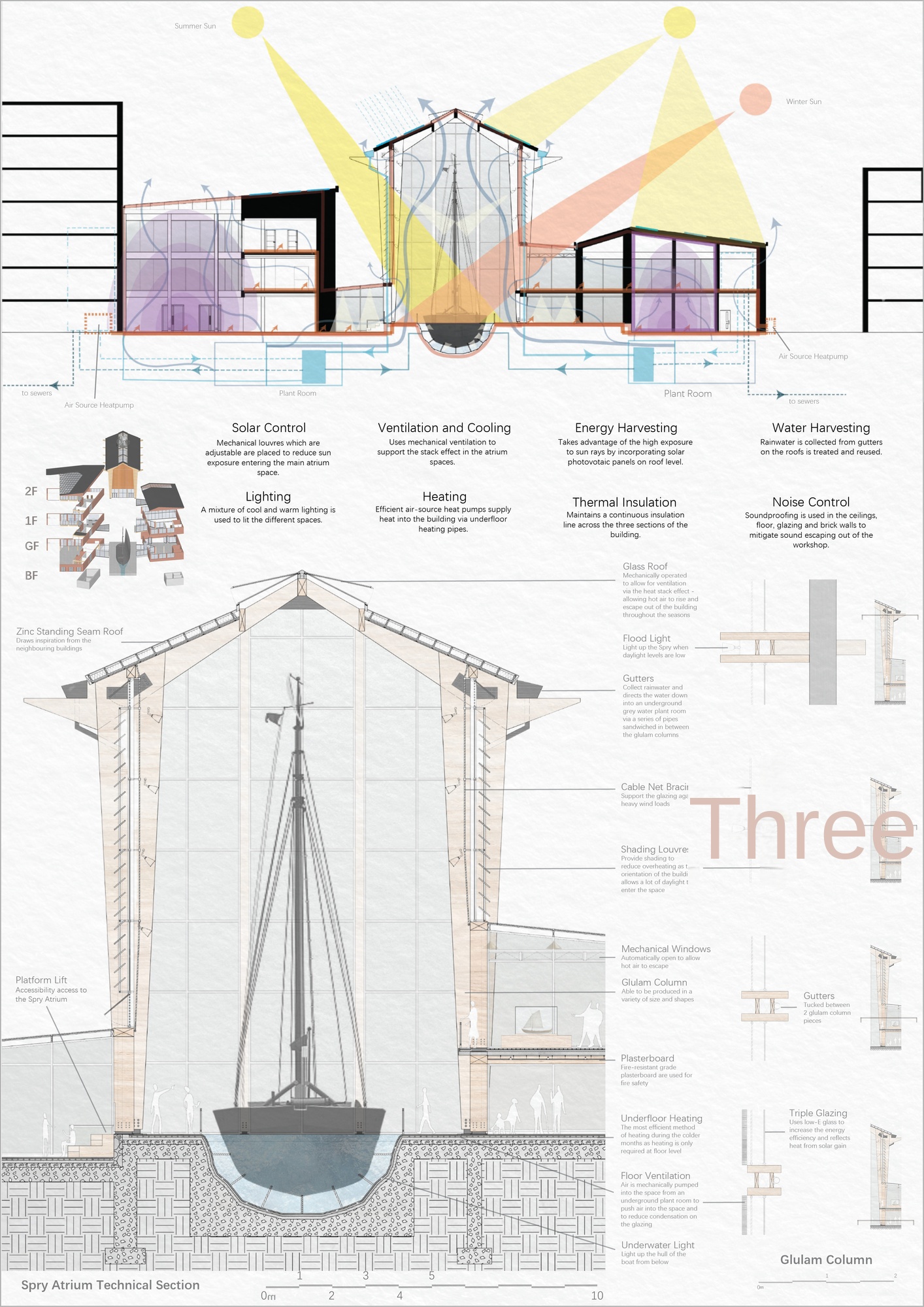
Gloucester Dockyard Cove Page 1
Page 1 of 5 of competition submission

Gloucester Dockyard Cove Page 2
Page 2 of 5 of competition submission

Gloucester Dockyard Cove Page 3
Page 3 of 5 of competition submission

Gloucester Dockyard Cove Page 4
Page 4 of 5 of competition submission

Gloucester Dockyard Cove Page 5
Page 5 of 5 of competition submission
The Gloucester Dockyard Cove was submitted as a part of my third-year Design Studio coursework for the BA(Hons) Architecture and Planning course at the University of the West of England.
The Gloucester Dockyard Cove is home to the Spry Museum, housing the Spry- the last remaining Severn Trow, William's Boat-making Workshop and Severn Ferry Tours Terminal located on the barge arm in the Gloucester Docks. The development is a place of learning, through the lens and experience of life. It reminds people about the meaning and the journey of Life - that death is not always the end. Even after death of the ships, their afterlives serve a different purpose. In the Spry Museum, the remains of the Severn Trows serve as educational material while reclaimed wood brought to the Workshop are given new life as new boats. The development blends Feng Shui Architecture into the context of historic Gloucester, through its siting, orientation, circulation, materials, construction techniques and landscaping.
My course allows creative freedom for students to explore and engage with topics they are interested in. Growing up in a Chinese community in Brunei, I have grown interested in my culture and wish to integrate the art of Feng Shui into the design of all my projects. Throughout my years in architecture school, I have consistently incorporated elements of Chinese culture into my designs in terms of form, siting, flow, massing, etc. I also wrote my dissertation on Feng Shui, titled Feng Shui: the Way of Wind and Water, Integrating Feng Shui into UK Apartments as an alternative design approach.
A final-year student of Architecture and Planning in the University of the West of England with a dedication to sustainable design and prospects of balancing multicultural disciplines in architecture. In my years of studies, I committed time to the art of Feng Shui and incorporated it across all my academic work to achieve a contemporary view of traditional architecture. I aim to contribute to a more inclusive environment socially and culturally. I am a well-organised professional with a strong range of design and communication skills.















